
cd_nom
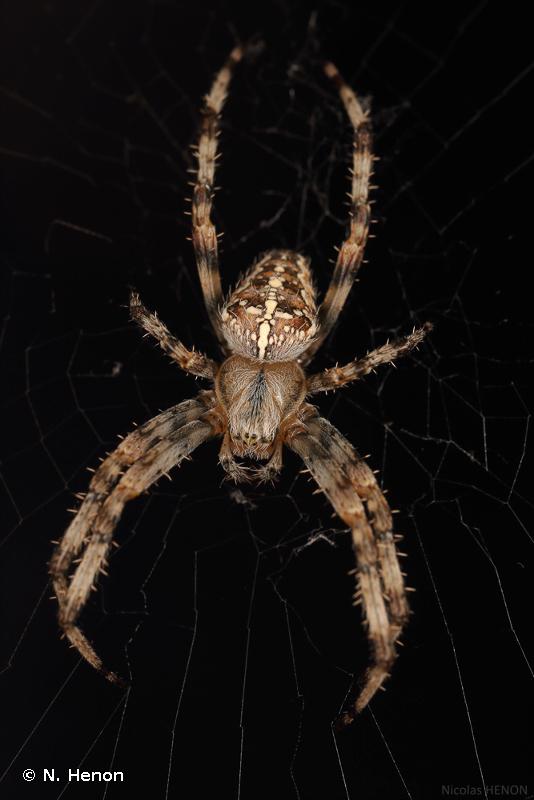
| Author : N. Henon |
 |
To get the picture, please visit:
Despite the Creative Commons license, please inform the author of the use which will be made of his photo
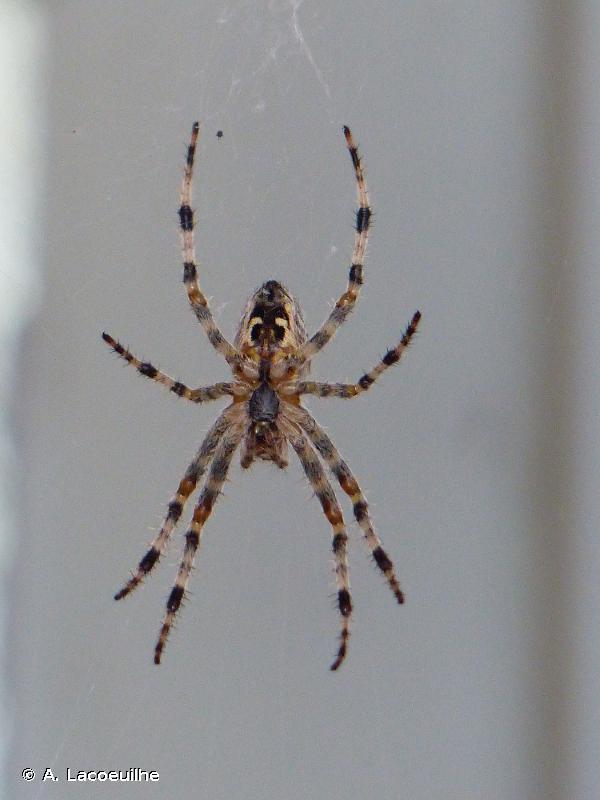
| Author : A. Lacoeuilhe |
 |
To get the picture, please visit:
Aurélie Lacoeuilhe
aurelie.lacoeuilhe@wanadoo.fr
Despite the Creative Commons license, please inform the author of the use which will be made of his photo

| Author : A. Lacoeuilhe |
 |
To get the picture, please visit:
Aurélie Lacoeuilhe
aurelie.lacoeuilhe@wanadoo.fr
Despite the Creative Commons license, please inform the author of the use which will be made of his photo

| Author : P. Le Mao |
 |
To get the picture, please visit:
Patrick Le Mao
Association française d'Arachnologie
http://asfra.fr/Site/Main_public.html
email : inpn@mnhn.fr
Any reuse of one or more photographs on this site is subject to an authorization request from the author.
Link to the Code of Intellectual Property (Legifrance)
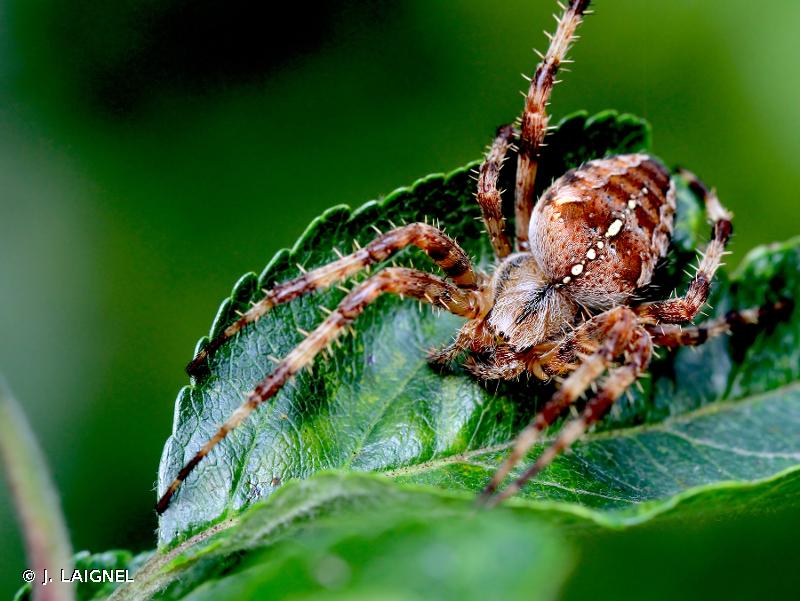
| Author : J. LAIGNEL |
 |
To get the picture, please visit:
Julien Laignel
Chargé de mission SNB - SPN/MNHN
4, avenue du Petit Château
91800 BRUNOY
Tel.: 06.10.68.23.36
Mail: julien.laignel@9online.fr
Despite the Creative Commons license, please inform the author of the use which will be made of his photo
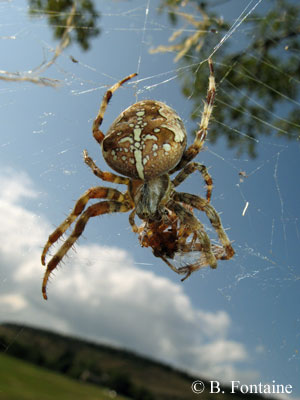
| Author : B. Fontaine |
 |
To get the picture, please visit:
Benoît Fontaine
Muséum national d'Histoire naturelle
Département Systématique et Evolution - Malacologie
USM 602. Case postale N° 51
75231 PARIS CEDEX 05
Tel: 33 (1) 40 79 31 02
Any reuse of one or more photographs on this site is subject to an authorization request from the author.
Link to the Code of Intellectual Property (Legifrance)
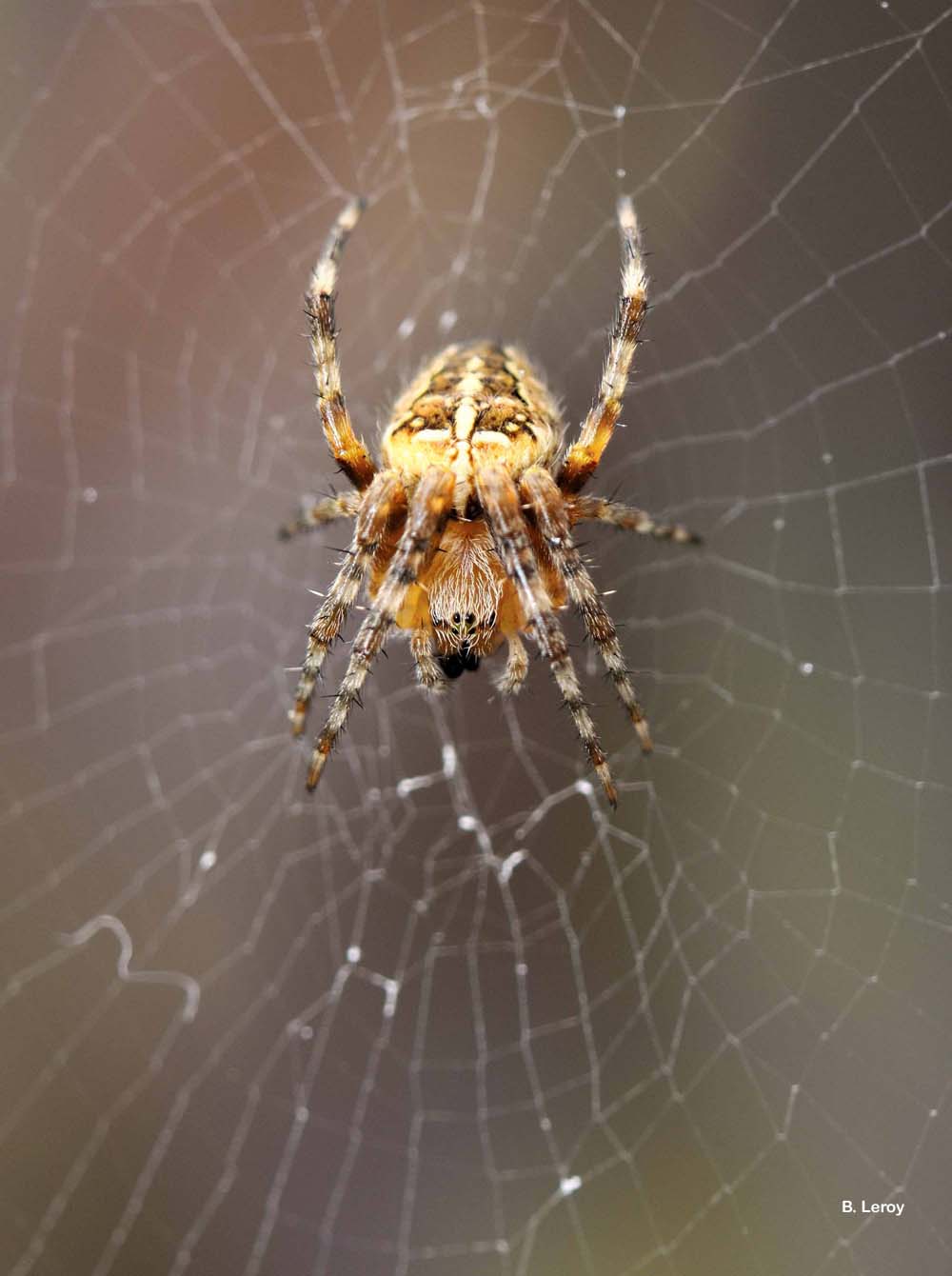
| Author : B. Leroy |
 |
To get the picture, please visit:
Boris Leroy
Biodiversité et gestion des territoires
Université de Rennes 1
SPN , Av du Gal leclerc
30042 Rennes Cedex
Legend: femelle, Côtes-d'Armor
Any reuse of one or more photographs on this site is subject to an authorization request from the author.
Link to the Code of Intellectual Property (Legifrance)
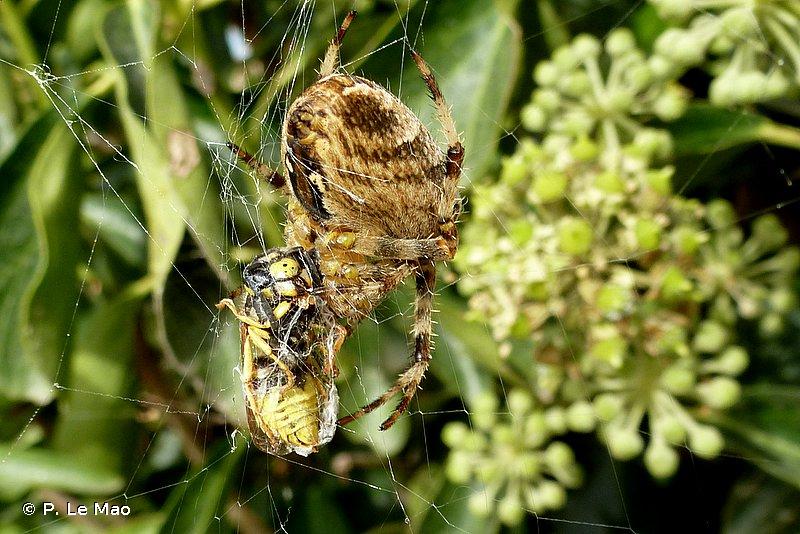
| Author : P. Le Mao |
 |
To get the picture, please visit:
Patrick Le Mao
Association française d'Arachnologie
http://asfra.fr/Site/Main_public.html
email : inpn@mnhn.fr
Any reuse of one or more photographs on this site is subject to an authorization request from the author.
Link to the Code of Intellectual Property (Legifrance)
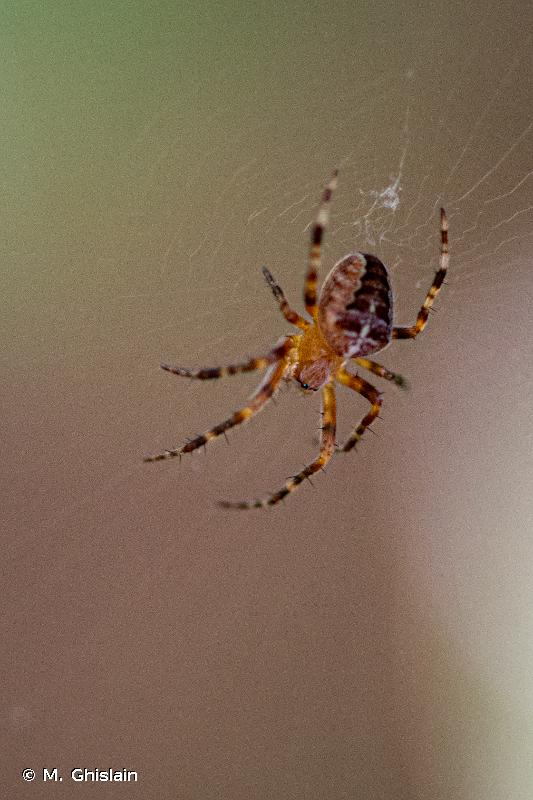
| Author : M. Ghislain |
 |
To get the picture, please visit:
Ghislain Manon
MNHN
43 rue Buffon
75005 Paris
Despite the Creative Commons license, please inform the author of the use which will be made of his photo

| Author : S. Wroza |
 |
To get the picture, please visit:
Wroza Stanislas
Muséum national d'Histoire naturelle - PatriNat
36 rue Geoffroy Saint-Hilaire CP 41
75 231 PARIS CEDEX 05
e-mail : s.wroza@hotmail.fr
Despite the Creative Commons license, please inform the author of the use which will be made of his photo

| Author : G. Bourderionnet / INPN |
 |
To get the picture, please visit:
Guy Bourderionnet
inpn@mnhn.fr
Despite the Creative Commons license, please inform the author of the use which will be made of his photo
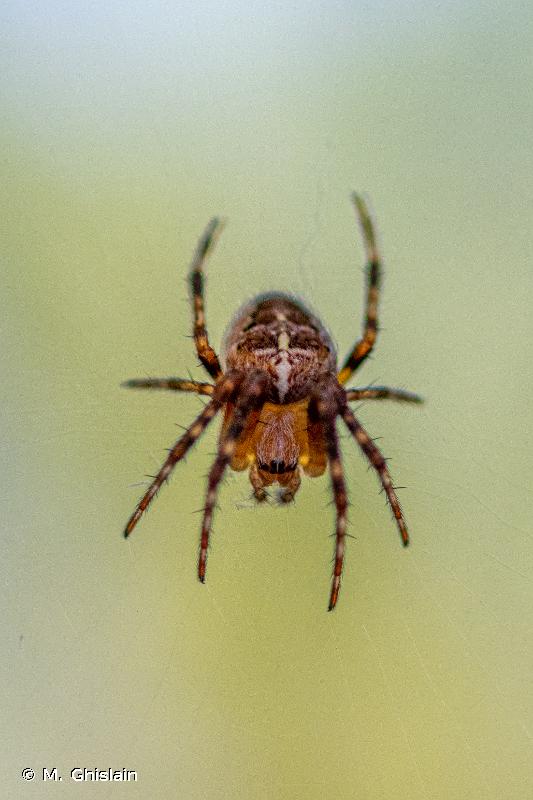
| Author : M. Ghislain |
 |
To get the picture, please visit:
Ghislain Manon
MNHN
43 rue Buffon
75005 Paris
Despite the Creative Commons license, please inform the author of the use which will be made of his photo
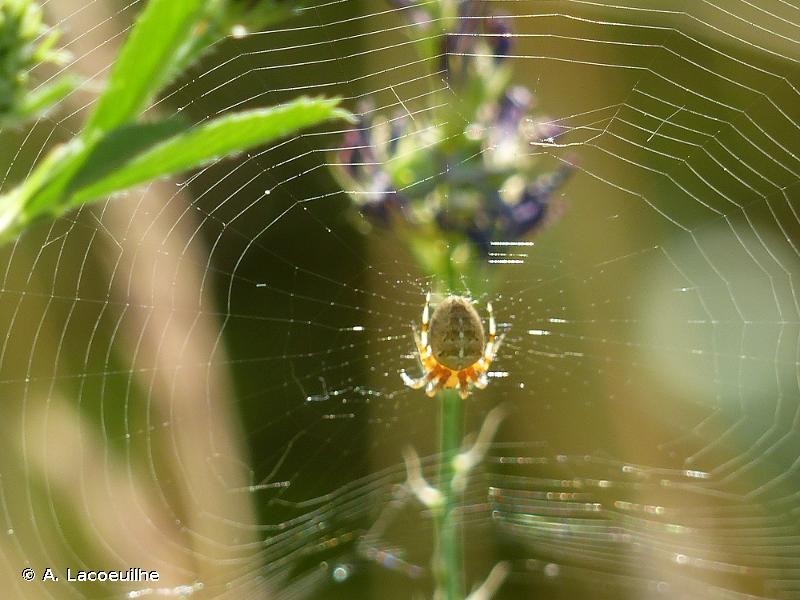
| Author : A. Lacoeuilhe |
 |
To get the picture, please visit:
Aurélie Lacoeuilhe
aurelie.lacoeuilhe@wanadoo.fr
Despite the Creative Commons license, please inform the author of the use which will be made of his photo
Distribution mondiale
toute l'Europe, Moyen-Orient, Asie du Nord, Amérique du Nord
Caractères distinctifs, espèces
Taille - femelle : 10-20 mm, mâle : 5-11 mm.
La coloration générale est brune. Le dessin du dos de l'abdomen (folium), avec un ensemble de taches blanches formant une croix et avec une partie médiane brune se terminant en pointe, bordée d'une ligne blanche dentelée, est caractéristique d'un groupe d'épeires (A. diadematus, A. marmoreus et A. pallidus). La distinction avec A. pallidus, méridionale, nécessite l'observation des pièces génitales.
Milieux colonisés
Elle colonise tous les milieux qui permettent de tisser une toile assez grande, du sol jusqu'à une hauteur de 1m50-2m. On l'observe plutôt dans des milieux pas trop secs et rarement en forêt épaisse.
Chasse
La toile capture une grande variété d'insectes volants. L'araignée capture les plus gros mais délaisse les plus petits (par exemple les pucerons) qui seront consommés au moment de la réfection de la toile.
Développement, cycle
Le cycle est annuel en France, mais peut atteindre deux ans (biennal) pour quelques individus. Les mâles sont présents de fin août à septembre, les femelles de septembre au début de l'hiver.
Devenu adulte, le mâle recherche les femelles qu'il trouve grâce aux phéromones qu'elles dissipent dans l'air. La parade, qui a lieu à partir de la toile, est particulièrement longue. Dès la fin de l'accouplement, le mâle est souvent agressé. La ponte a lieu en automne. Les cocons sont cachés dans la litière, sous les écorces. Chaque cocon comprend plusieurs centaines d'œufs (500 à 900). Il existe une diapause embryonnaire levée par le froid. Les jeunes sortent des cocons en mai. Ils restent quelques jours ensemble puis se dispersent. Les individus n'ayant pas atteint le stade adulte en hiver, ou des femelles non fécondées, peuvent survivre. Mais les femelles ne pondent qu'en jours décroissants, aussi le cycle ne sera-t-il bouclé qu'à l'automne suivant.
Alain Canard(Université de Rennes/Service du Patrimoine Naturel, MNHN),2014
Continental
Metropolitan France
Overseas
Marine
Metropolitan France
Overseas
The map presents a summary at the 10 x 10 km grid of the observation data for the species transmitted to the SINP. These data have been subjected to validation filters.
The map presents a reference distribution layer of the species at the scale of departments and marine sectors. The presence and absence data were established by expertise within a network of partners. This reference distribution is used in the validation process of the SINP data at the INPN level.
Corresponds to a report on the basis of at least one observation proved within a period of 10 years (20 years for little-known invertebrates) preceding the year and no presumption of extinction since obtaining the last data nor doubt on reproductive and implemented nature of this population. For migratory species, the presence indicated concerns areas of reproduction.
This status is based on one or more of the following criteria:
This point covers the absence, more difficult by nature to demonstrate than presence. This status is based on one or more of the following criteria:
This status must be assigned to a department in which the presence of the species is casual.
Particular case of absence due to a proven extinction less than a half century ago (older disappearances are treated as "no probable or definite").
In the state of knowledge, we can not comment on the presence or absence in the current department. This is the default status when not comprised in one of the previous categories or whenever there is doubt.
The map shows the global distribution of the species based on GBIF data (Global Biodiversity Information Facility).
